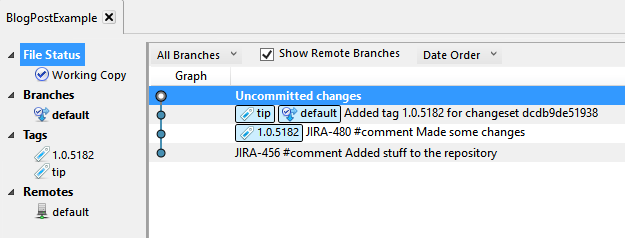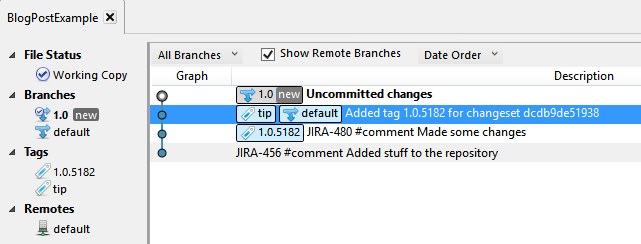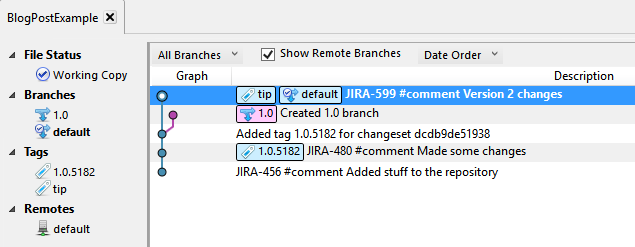The Inner Drive Extensible Architecture™ is about to get wider distribution.
After 11 years of development, I think it's finally ready for wider distribution. And, who knows, maybe I'll make a couple of bucks.
I've updated the pricing structure and the license agreement, and in the next week or so (after some additional testing), I'm going to release it to NuGet.
That doesn't make it free; that makes it available. (Actually, I am making it free for development and testing, but I'm charging for commercial production use.)
I'll have more to say on this once it's released.
I don't know how this little snippet of code got into a project at work (despite the temptation to look at the file's history):
Search = Search.Replace("Search…", "");
// Perform a search that depends on the Search member being an empty string
// Display the list of things you find
First, I can't fathom why the original developer made the search method dependent on a hard-coded string.
Second, as soon as the first user hit this code after switching her user profile to display Japanese, the search failed.
The fix was crushingly simple:
var localizedSearchPrompt = GetLocalizedString("SearchPrompt");
Search = Search.Replace(localizedSearchPrompt, string.Empty);
(The GetLocalizedString method in this sample is actually a stub for the code that gets the string in the current user's language.)
The moral of the story is: avoid hard-coded strings, just like you've been taught since you started programming.
I had planned to post some photos tonight showing the evolution of digital cameras, using a local landmark, but there's a snag. The CF card reader I brought along isn't showing up on my computer, even though the computer acknowledges that something is attached through a USB port.
As I'm visiting one of the most sophisticated and technological cities in the world, I have no doubt I can fix this tomorrow. Still, it's always irritating when technology that worked a few days ago simply stops working.
For those doubting my troubleshooting skills, I have confirmed that the CF card has all the photos I shot today; that the computer can see the CF card reader; and that the computer can connect effectively to other USB attachments. The problem is therefore either in the OS or in the card reader, and I'm inclined to suspect the card reader.
The repercussions from Monday's data-recovery debacle continued through yesterday.
By the time business started Tuesday morning, I had restored the client's application and database to the state it had at the moment of the upgrade, and I'd entered most of their appointments, including all of them through tomorrow (Thursday). When the client started their day, everything seemed to be all right, except for one thing I also didn't know about their business: some of their customers pay them based on the appointment ID, which is nothing more than a SQL IDENTITY column in the database.
If you know how databases work, you know that IDENTITY columns are officially non-deterministic. In this specific case, the column increments by one every time it adds a row, but also in this specific case, I didn't re-enter the data in the same order it was originally entered, since I prioritized the earlier appointments.
We've gotten through the problem now, and the client no longer want to put my head on a spike, so I will now take a moment for an after-action review that might help other software developers in the future.
First, the things I did right:
- When I deployed the upgrade Saturday, I preserved the state of the database and application at exactly that moment.
- All of the data in the system, every field of it, was audited. It was trivially easy to produce a report of every change made to the system from roll-out Saturday afternoon through roll-back Monday night.
- When I rolled back the upgrade Monday night, I preserved the state of the upgraded database and application at exactly that moment.
- When the client first noticed the problem, I dropped everything else and worked out a plan with them. The plan centered around getting their business back up first, and then dealing with the technology.
- Their customers were completely back to normal at the start of business Tuesday.
- The application runs on Windows Azure, which made preserving the old application state not only easy, but possible.
So what should I have done better?
- My biggest error was overconfidence in my ability to roll back the upgrade. No matter what other errors I made, this was the root of all of them.
- The second major error was not testing the UI on Internet Explorer 8. Mitigating this was the fact that neither I nor my client was aware that the bulk of their customers used IE8. However, given that people using IE8 were totally unable to use the application, even if the numbers of customers using IE8 was very small, the large impact should have put IE8 near the top of my regression test checklist.
- Instead of spending a couple of hours re-entering data, I should have written a script to do it.
- I have always regretted (though never more than today) publicizing the appointments IDENTITY column to the end user, because it's normal they'd use this ID for business purposes. This illustrates the danger—not just the sloppy design—of using a single database field for two purposes. Any future version of the application will have an OrderID field that is not a database plumbing field.
All in all, the good things outweighed the bad, and I may get back in my client's good graces when I roll out the next update. You know, the one that works on IE8, but still solves the looming problem of the platform's age.
I've just picked up Bob Martin's The Clean Coder: A Code of Conduct for Professional Programmers .
.
I'm just a couple chapters in, and I find myself agreeing with him vehemently. So far, he's reinforcing the professional aspects of the profession. Next chapters will TDD, testing, estimation, and a bunch of other parts of the profession that are more difficult than the actual coding part.
More later.
I just did a dumb thing in Mercurial, but Mercurial saved me. Allow me to show, vividly, how using a DVCS can prevent disaster when you do something entirely too human.
In the process of upgrading to a new database package in an old project, I realized that we still need to support the old database version. What I should have done involved me coming to this realization before making a bucket-load of changes. But never mind that for now.
I figured I just need to create a branch for the old code. Before taking this action, my repository looked a like this:

Thinking I was doing the right thing, I right-clicked the last commit and added a branch:

Oops:

Well, now I have a problem. I wanted the uncommitted changes on the default branch, and the old code on the 1.0 branch. Now I have the opposite condition.
Fortunately this is Mercurial, so nothing has left my own computer yet. So here's what I did to fix it:
- Committed the changes to the 1.0 branch of this repository. The commit is in the wrong branch, but it's atomic and stable.
- Created a patch from the commit.
- Cloned the remote (which, remember, doesn't have the changes) back to my local computer.
- Created the branch on the new clone.
- Committed the new branch.
- Switched branches on the new clone back to default.
- Applied the patch containing the 2.0 changes.
- Deleted the old, broken repository.
Now it looks like this:

Now all is good in the world, and no one in my company needs to know that I screwed up, because the screw-up only affected my local copy of the team's repository.
It's a legitimate question why I didn't create a 2.0 branch instead. In this case, the likelihood of an application depending on the 1.0 version is small enough that the 1.0 branch is simply insurance against not being able to support old code. By creating a branch for the old code, we can continue advancing the default branch, and basically forget the 1.0 branch is there unless calamity (or a zombie application) strikes.
The test configuration earlier today wasn't the problem. It turned out that MSBuild simply didn't know it had to pull in the System.Web.Providers assembly. Fortunately, this guy suggested a way to do it. I created a new file called AssemblyInit that looks like this:
using System.Diagnostics;
using System.Web.Providers;
using Microsoft.VisualStudio.TestTools.UnitTesting;
namespace MyApp
{
public class AssemblyInit
{
[AssemblyInitialize]
public void Initialize()
{
Trace.WriteLine("Initializing System.Web.Providers");
var dummy = new DefaultMembershipProvider();
Trace.WriteLine(string.Format("Instantiated {0}", dummy));
}
}
}
That does nothing more than create a hard reference to System.Web.Providers, causing MSBuild to affirmatively import it.
Now all my CI build works, the unit tests work, and I can go have a weekend.
One of my tasks at my day job today is to get continuous integration running on a Jenkins server. It didn't take too long to wrestle MSBuild to the ground and get the build working properly, but when I added an MSTest task, a bunch of unit tests failed with this error:
System.IO.FileNotFoundException: Could not load file or assembly 'System.Web.Providers, Version=1.0.0.0, Culture=neutral, PublicKeyToken=31bf3856ad364e35' or one of its dependencies. The system cannot find the file specified.
The System.Web.Providers assembly is properly referenced in the unit test project (it's part of a NuGet package), and the assembly's Copy Local property is set to True.
When the unit tests run from inside Visual Studio 2013, they all work. When ReSharper runs them, they all work. But when I execute the command line:
MSTest.exe /resultsfile:MSTestResults.trx /testcontainer:My.Stupid.Test\bin\My.Stupid.Test.dll /test:MyFailingTest
...it fails with the error I noted above.
I'll spare you the detective work, because I have to get back to work, but I did find the solution. I marked the failing test with a DeploymentItemAttribute:
[TestMethod]
[DeploymentItem("System.Web.Providers.dll")]
public void MyFailingTest()
{
try
{
DoSomeTestyThings();
}
finally
{
CleanUp();
}
}
Now, suddenly, everything works.
And people wonder why I hate command line crap.
 I'm David Braverman, this is my blog, and Parker is my 7½-year-old mutt. I last updated this About... page in September 2011, more than 1,300 posts back, so it's time for a refresh.
I'm David Braverman, this is my blog, and Parker is my 7½-year-old mutt. I last updated this About... page in September 2011, more than 1,300 posts back, so it's time for a refresh.
The Daily Parker is about:
- Parker, my dog, whom I adopted on 1 September 2006.
- Politics. I'm a moderate-lefty by international standards, which makes me a radical left-winger in today's United States.
- The weather. I've operated a weather website for more than 13 years. That site deals with raw data and objective observations. Many weather posts also touch politics, given the political implications of addressing climate change, though happily we no longer have to do so under a president beholden to the oil industry.
- Chicago (the greatest city in North America), and sometimes London, San Francisco, and the rest of the world.
- Photography. I took tens of thousands of photos as a kid, then drifted away from making art until early 2011 when I finally got the first digital camera I've ever had whose photos were as good as film. That got me reading more, practicing more, and throwing more photos on the blog. In my initial burst of enthusiasm I posted a photo every day. I've pulled back from that a bit—it takes about 30 minutes to prep and post one of those puppies—but I'm still shooting and still learning.
I also write a lot of software, and will occasionally post about technology as well. I work for 10th Magnitude, a startup software consultancy in Chicago, I've got more than 20 years experience writing the stuff, and I continue to own a micro-sized software company. (I have an online resume, if you're curious.) I see a lot of code, and since I often get called in to projects in crisis, I see a lot of bad code, some of which may appear here.
I strive to write about these and other things with fluency and concision. "Fast, good, cheap: pick two" applies to writing as much as to any other creative process (cf: software). I hope to find an appropriate balance between the three, as streams of consciousness and literacy have always struggled against each other since the first blog twenty years ago.
If you like what you see here, you'll probably also like Andrew Sullivan, James Fallows, Josh Marshall, and Bruce Schneier. Even if you don't like my politics, you probably agree that everyone ought to read Strunk and White, and you probably have an opinion about the Oxford comma—punctuation de rigeur in my opinion.
Thanks for reading, and I hope you continue to enjoy The Daily Parker.